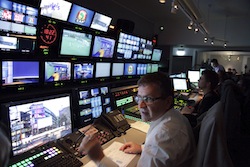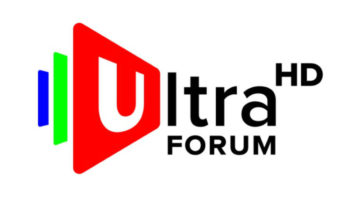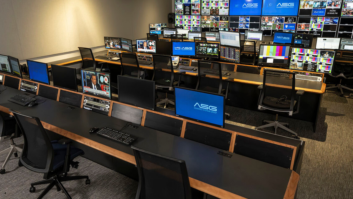
With the official start of HDTV and the live launch of the new HD galleria, new workflows as well as new control concepts have been introduced at WDR in Cologne. Reinhard Wagner explains the HD technology behind the investment and explains the altered control and workflow concepts
Because the galleria at Studio B of Westdeutscher Rundfunk Köln needed refurbishment, WDR started planning for rebuilding and upgrading to HDTV back in 2004. At this point the EBU as well as ARD had not finally defined what video format should be accepted and used system-wide.
Because of the fact that there was no intention to build a stand-alone solution, the WDR project was put on hold in 2005. At the end of 2008 the planning did start again, after the decision was made to use the transmission and production standard 720p/50 recommended by EBU and IRT.
On 9 December 2008 WDR published the EU tender documents for the renewal of the central galleria in the studio area A and B for their facilities in Cologne. The tender included the renewal of Regiezone Studio B as the central galleria for studio A and B in HD technology as well as furniture and racks.
This affected the video/audio galleria, VTR room and renewal of studio terminal boxes in the related studios. The goal was to use the galleria zone for both studios. After the final approval of all offerings (arriving 29 January 2009), the contract was assigned on 31 March 2009 to BFE Studio und Medien Systeme GmbH in Mainz.
Planning reconstruction
In summer 2009, the galleria of Studio B was refurbished so this area could be used as the central HD galleria for Studio A and B in the future. A major part of the WDR planning was the idea of a new operations philosophy, new workflows and production scenarios. With the EU tender it was unclear whether or not the new concept could be realised in all areas with the offered components, until the final signing of the contract. After eleven months of refurbishment works the project was finally accepted by WDR on 21 February 2010.
The concept-of-use represents the requirements of the programme departments and the resulting basic direction of the studio technology in the new Studio B. The technical realisation considers the actual decisions of ARD for the introduction of HD and 5.1 production as well as the broadcasters conditions.
Studio areas A and B should also be networked and the concept determined to use a single galleria zone just for one studio area. The concept-of-use in regard of programming focused on the actual editorial requirements of the currently realised productions and their workflows.
Mainly the galleria was used for sport, talk and magazine shows. These formats defined the technical and spacial demands for the new Studio B. ARD premium formats Sportschau Bundesliga and Hart aber fair have been used as guidelines for the personal and technology-intensive productions in the studio. Special productions that exceed requirements, can be realised by additional equipment that is rented or ordered separately.
The aforementioned programme formats are generated in different production workflows, such as for example live or pre-recorded (add-on, production with separately wired cameras). The live programmes have higher security needs and require a breakdown concept.
On top of that for a paperless workflow the integration of NRCS OpenMedia was a major demand. With the enhancements on the programme and technical side there is an obvious increase in required space for external services and editorial staff. Within the boundaries of the refurbishment, a dedicated focus was set on existing spacial facts to realize a flexible work-concept with an optimised utilisation of space.
System technology
The technical concept-of-use yield of the mentioned programmes related to the requests outlined here and the general conditions set by ARD and WDR. The conditions are for example HD and 5.1 capabilities (Dolby E) of the galleria and the additional link of studio space A to galleria B: WDR can produce with a single galleria in HD technology in two studios.
General conditions are: eight camera channels (Hart aber fair); link to the new TV switching area with a high wiring request especially for sports broadcasts; intercom with connections to internal and external service providers; a sophisticated contribution circuit for Sportschau Bundesliga with tapeless workflows; and detailed representations of fast moving actions.
As basic parameters for the technical concept of OB and studio production, a modular and easy extendible mechanical and technical design as well as format correct and native full frame displaying on all monitors in SD and HD was desired. Equipment needed to have low latency; be common in use at WDR as well as in the industry (ease of use when rented of operated by external personal); high quality internal and external service and support; and should guarantee, by defining a common production and format standard, less quality losses through conversion processes (i.e. production in a single HD format requiring an adequate delivery of source material).
The galleria design includes a Kahuna 4ME vision mixer from Snell; video router EQX26 (576 x 576 matrix) and a multi-viewer system VIPX from Evertz; an Aurus audio mixing console with 48 channels and a Nexus audio router (both Stagetec) consisting of nine by fibre cable interconnected central units; and a BFE Tally controller and the control system KSC Manager/Pilot+ and KSC Commander.
Main components such as distribution amplifiers, equalisers and many of the modular components and carrier systems are also from Snell. All TFT displays (9/24/32 and 47 inch) are deliverd by VTS and there’s a KVM system (four matrix Type Neo16) from Guntermann & Drunck. WDR itself provided eight Ikegami cameras (HDK 79EX III), one wireless camera and a Riedel Artist intercom system.
In the HD central galleria a video router (EQX26) is used for flexible assignment of all signal sources on monitors and the video mixer. The signals are distributed via BNC cabling as well as XLink connections: all eleven multi-viewers (VIPX 16×2/32×2) are fed that way, which are signaling one or two displays via DVI or HD-SDI.
The router does have an internal redundant structure. Besides power supplies and controllers, there is also a matrix redundancy on signal level. All installed multi-viewers are redundantly linked via XLink to the video router, that even a major incident does not cause a full breakdown. Video distribution amplifiers supply signals via HD-SDI directly to dedicated displays on their second inputs.
The BFE controller works via Ethernet with the video router, switches signals onto the multi-viewer and sends labels (IMD) and Tally information. The Maestro software (Evertz) is used for configuration and layout of the multi-viewer displays.
As a centralised broadcast equipment control system WDR chose the KSC Commander system. Besides reliability issues, the realisation of specific WDR control functions were major points for the final system decision. The Master Control System is interconnected to all systems that need to be controlled via a Cisco router (see fig 1). To drive the routers (monitoring, matching, RS422, timecode and audio) networked device servers are incorporated.
Manual control of all system functions is enabled by a series of different LCD control panels (BFE). The freedom to program control panel buttons independently has been optimised by the planning department of WDR; it offers almost all functions on each panel.
For monitoring purposes over 54 displays are in use. One of the major criteria for these displays (VTS) has been the networking capability, enabling an easy way to recall setup and configuration data. All displays delivered by VTS are in conformity with EBU TECH 3320, but do not fulfill Grade 1 requirements, which is not possible with the current state of technology.
Training and usability
The training of the WDR operations team happened in several steps. Employees were trained on basic functions during the factory acceptance tests. All necessary system knowledge for the live operation was achieved during the ten-week testing phase.
During that time the WDR customised configuration of the system took place, supported by BFE. It showed the flexibility of system and the limitations of the operational setup without specific precognition.
During the introduction phase employees had to be trained constantly on the system. Young engineers and technicians, required to work with the software-based controls, have shown less fear of contact than colleagues who have worked until now with dedicated broadcast equipment. However. the attempt to provide simple, reduced-function control panels while maintaining complexity, high functionality and automation has proved successful.
The much-needed refurbishment of the out-dated studio infrastructure and installed equipment has resulted in a simplification and tightening of operational workflows. A higher grade of automation and simplified running order have also been achieved – resulting in faster reaction times thanks to the increased networking capabilities built into the new studio infrastructure.






